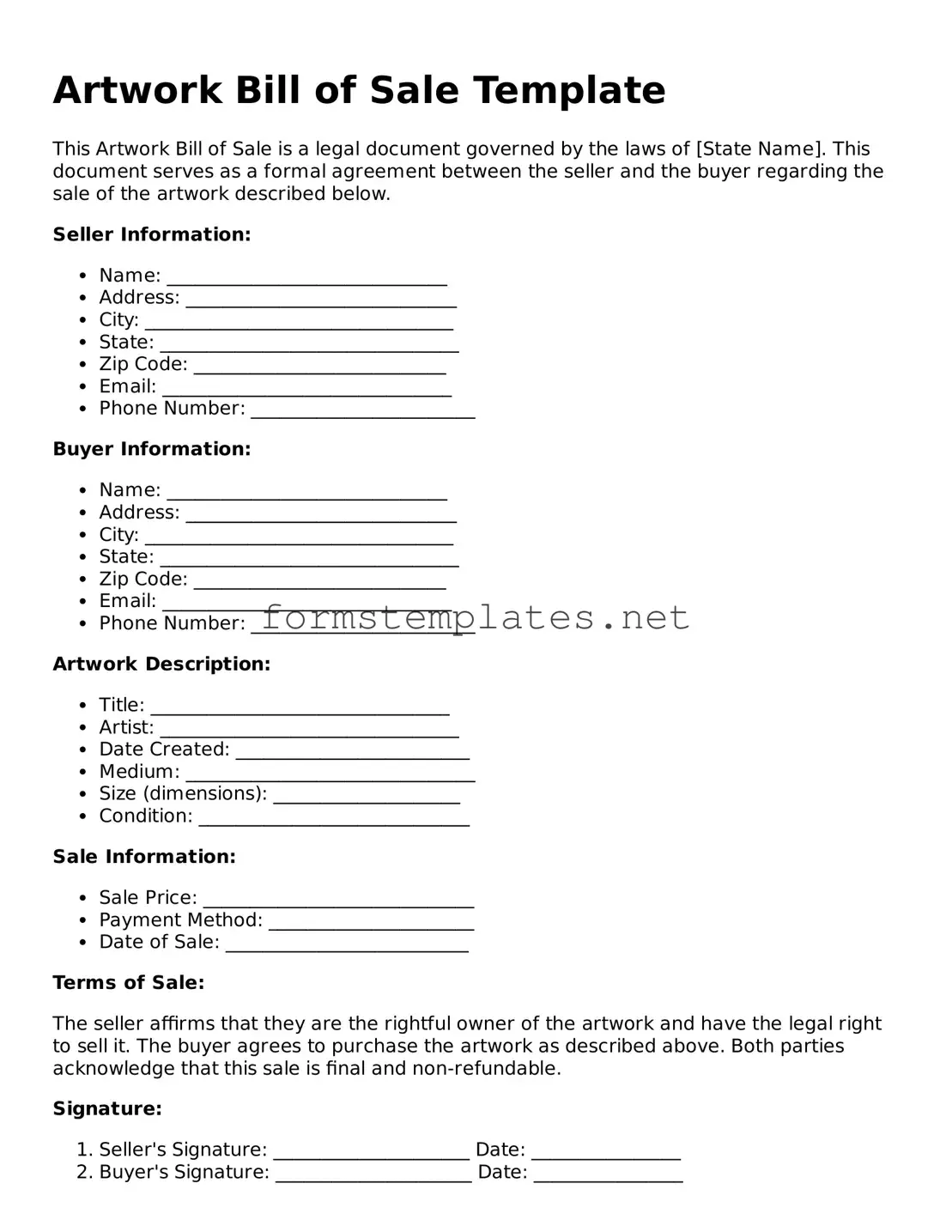What is an Artwork Bill of Sale?
An Artwork Bill of Sale is a legal document that serves as proof of the transfer of ownership of a piece of artwork from one party to another. This document typically includes important details such as the names of the buyer and seller, a description of the artwork, the sale price, and the date of the transaction. It can be used for various types of artwork, including paintings, sculptures, and prints.
Why is an Artwork Bill of Sale important?
This document provides several benefits. First, it protects both the buyer and seller by clearly outlining the terms of the sale. It helps prevent disputes by documenting the agreement reached between the parties. Additionally, an Artwork Bill of Sale can serve as a record for tax purposes, as it establishes the sale price and date of the transaction. For collectors, having a bill of sale can enhance the provenance of the artwork, which may increase its value over time.
What should be included in an Artwork Bill of Sale?
A comprehensive Artwork Bill of Sale should contain the following information:
-
Names and contact information
of both the buyer and seller.
-
Description of the artwork
, including title, artist, medium, dimensions, and any unique identifiers like a serial number or certificate of authenticity.
-
Sale price
agreed upon by both parties.
-
Date of the transaction
.
-
Signatures
of both the buyer and seller to validate the agreement.
Is an Artwork Bill of Sale legally binding?
Yes, an Artwork Bill of Sale is generally considered a legally binding document, provided it includes all necessary elements and is signed by both parties. However, the enforceability can depend on state laws and the specifics of the transaction. It is advisable for both parties to keep a copy of the signed document for their records.
Can I create my own Artwork Bill of Sale?
Yes, individuals can create their own Artwork Bill of Sale. Many templates are available online, and they can be customized to meet specific needs. However, it is important to ensure that all relevant information is included and that the document complies with local laws. For those unsure about the process, consulting with a legal professional can provide additional guidance and assurance.
